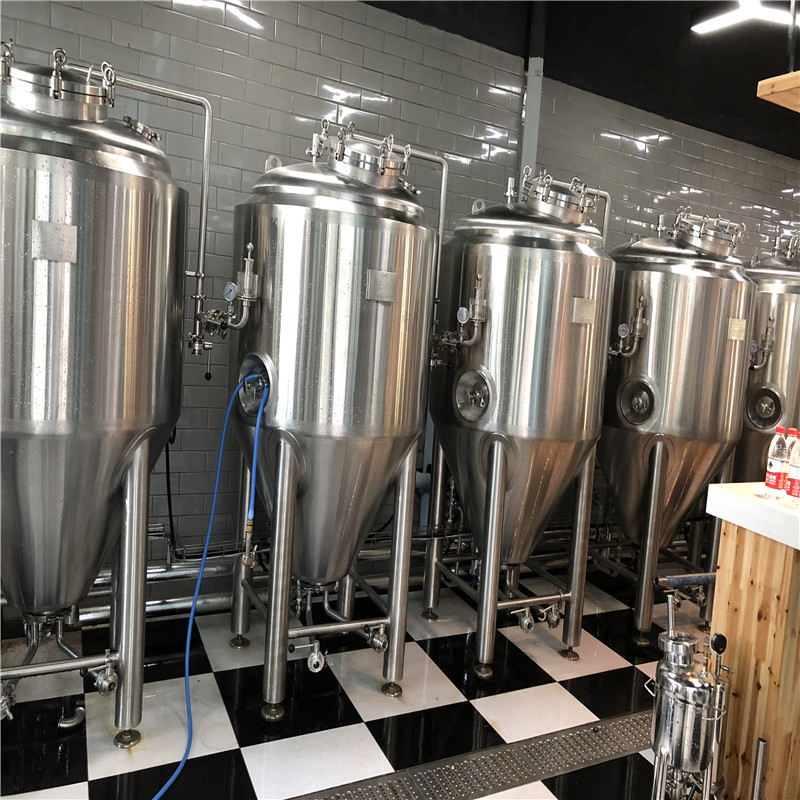Are you ready to take your home brewing game to the next level? Brewing your own beer is not only a rewarding hobby but also a creative outlet for those with a passion for the craft. If you’re serious about pursuing your dream of brewing the perfect beer, then you’ll need to invest in some essential brewery equipment. But what exactly is brewery equipment, and how can it help you achieve your brewing goals? In this comprehensive guide, we’ll explore everything you need to know about brewery equipment and how it can elevate your brewing experience. Whether you’re a novice brewer or a seasoned pro, this article will serve as your roadmap to setting up the ultimate brewing setup. So let’s dive in and unlock the secrets of brewing success together!
1. Introduction to Brewery Equipment
Brewery equipment is an essential component of the beer brewing process. It encompasses a range of tools and machinery that are used to transform raw ingredients into delicious and refreshing brews. From mashing and fermenting to bottling and serving, brewery equipment plays a crucial role in every stage of the beer production.
At the heart of any brewery is the brewhouse, which consists of various equipment designed to carry out the mashing and boiling process. This includes the mash tun, where malted grains are mixed with hot water to extract fermentable sugars, and the brew kettle, where the mixture is boiled and hops are added to provide bitterness, flavor, and aroma.
Fermentation is another key step in the brewing process, and brewery equipment ensures optimal conditions for yeast to convert sugars into alcohol and carbon dioxide. Fermentation vessels, such as fermenters or conical tanks, are used to hold the beer during this stage, allowing the yeast to work its magic. Temperature control systems are often employed to maintain precise conditions for different beer styles.
In addition to the brewhouse and fermentation equipment, there are various other tools and machinery that contribute to the overall brewing process. These include pumps, filters, heat exchangers, and kegging systems, among others. Each piece of equipment serves a specific purpose, ensuring efficiency, consistency, and quality in the beer production.
As you dive deeper into the world of brewing, understanding the different types of brewery equipment and their functions becomes crucial. In the following sections, we will explore the key components of brewery equipment in more detail, providing you with a comprehensive guide to brew your dream beer. So let’s get started!
2. Types of Brewery Equipment
In this section, we will explore the different types of brewery equipment that are essential for brewing your dream beer. Having the right equipment is crucial to ensure a successful brewing process and the production of high-quality beer. Let’s dive into the various types of brewery equipment you’ll need on your brewing journey!
-
Brew Kettle: The brew kettle is a vital piece of equipment used for boiling the ingredients needed for brewing beer. It is typically made of stainless steel and comes in various sizes to accommodate different batch sizes. This is where the grains, hops, and water come together, allowing you to extract flavors, aromas, and bitterness from the hops and convert starches into sugars.
-
Fermenter: The fermenter is where the magic happens – the transformation of wort into beer. It is a vessel where yeast is added to the cooled wort, initiating the fermentation process. Fermenters can be made of stainless steel or food-grade plastic, and they come in various shapes and sizes. The fermenter should be airtight to ensure proper control over the fermentation process, allowing the yeast to convert sugars into alcohol and carbon dioxide.
-
Mash Tun: The mash tun is a vessel specifically designed for mashing, which is the process of combining crushed grains with hot water to extract fermentable sugars. It provides an environment where enzymes in the grains can convert starches into sugars, creating the sweet liquid known as wort. Like other brewery equipment, mash tuns are available in different sizes and materials, with stainless steel being a popular choice due to its durability and ease of cleaning.
These are just a few examples of the essential brewery equipment needed for brewing your dream beer. Other important equipment includes a fermentation chamber or temperature control system, pumps for transferring liquid between vessels, a kegging system for packaging the final product, and various measuring instruments for monitoring the brewing process. By investing in the right brewery equipment, you can set yourself up for success and brew truly exceptional beer.
3. Tips for Selecting Brewery Equipment

When it comes to selecting brewery equipment, there are a few important factors to consider. From the size of your operation to your budget and brewing goals, these tips can help guide you in making the right choices for your dream beer.
-
Assess Your Needs: Begin by evaluating your brewing needs and goals. Consider the volume of beer you plan to produce, the types of recipes you want to experiment with, and any specific requirements you may have. This will help you determine the appropriate size and capabilities of the equipment you need.
-
Quality and Durability: Brewery equipment is a long-term investment, so it’s crucial to prioritize quality and durability. Look for equipment made from high-quality materials, such as stainless steel, as they are more resistant to corrosion and easier to clean. Additionally, consider the reputation and reviews of the equipment manufacturer to ensure you’re investing in reliable and well-crafted tools.
-
Budget Considerations: Setting a budget is an essential step in selecting brewery equipment. While it’s tempting to opt for the cheapest options, be mindful of the potential for subpar performance and durability. Look for a balance between quality and affordability, and consider the long-term cost versus the initial investment. Remember, investing in reliable equipment can save you money in the long run by minimizing maintenance and replacement costs.
By following these tips, you’ll be well on your way to selecting the brewery equipment that best suits your brewing needs, ensuring a smooth and enjoyable brewing experience. So go ahead, explore the wide range of brewery equipment available and turn your dream beer into a reality!

